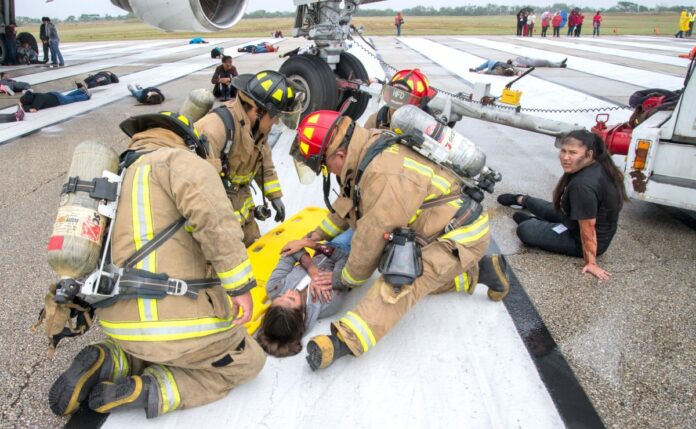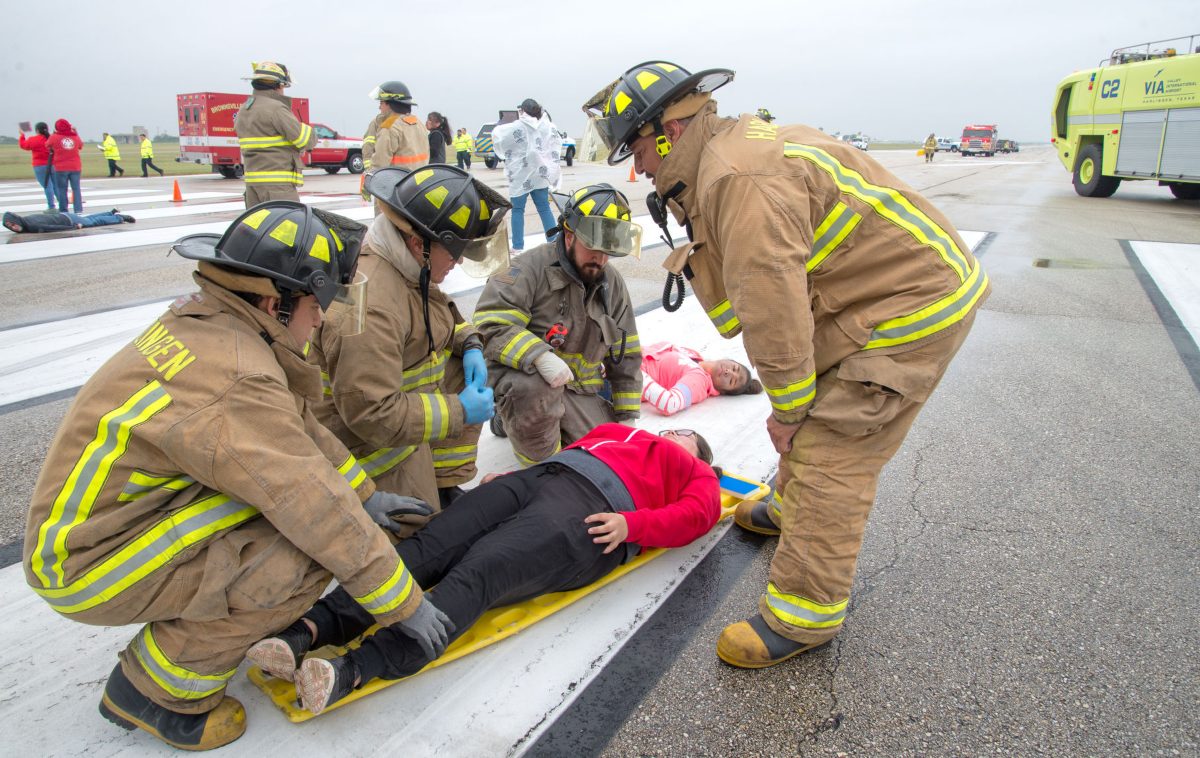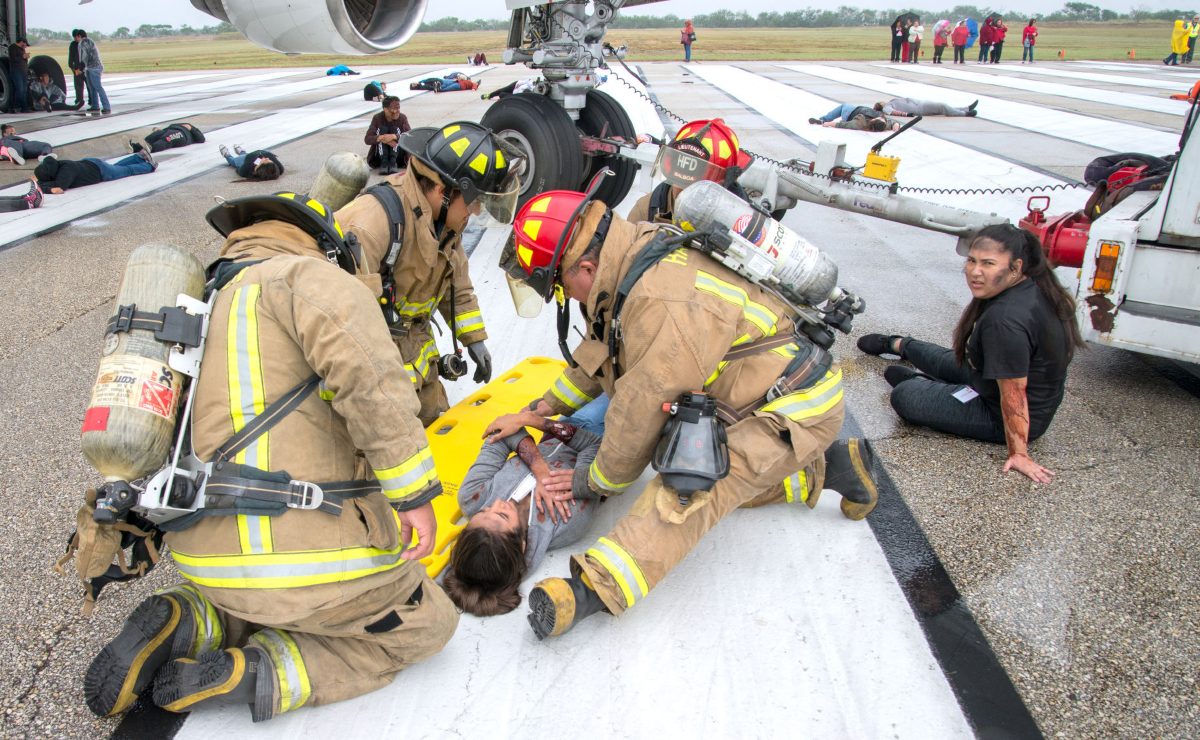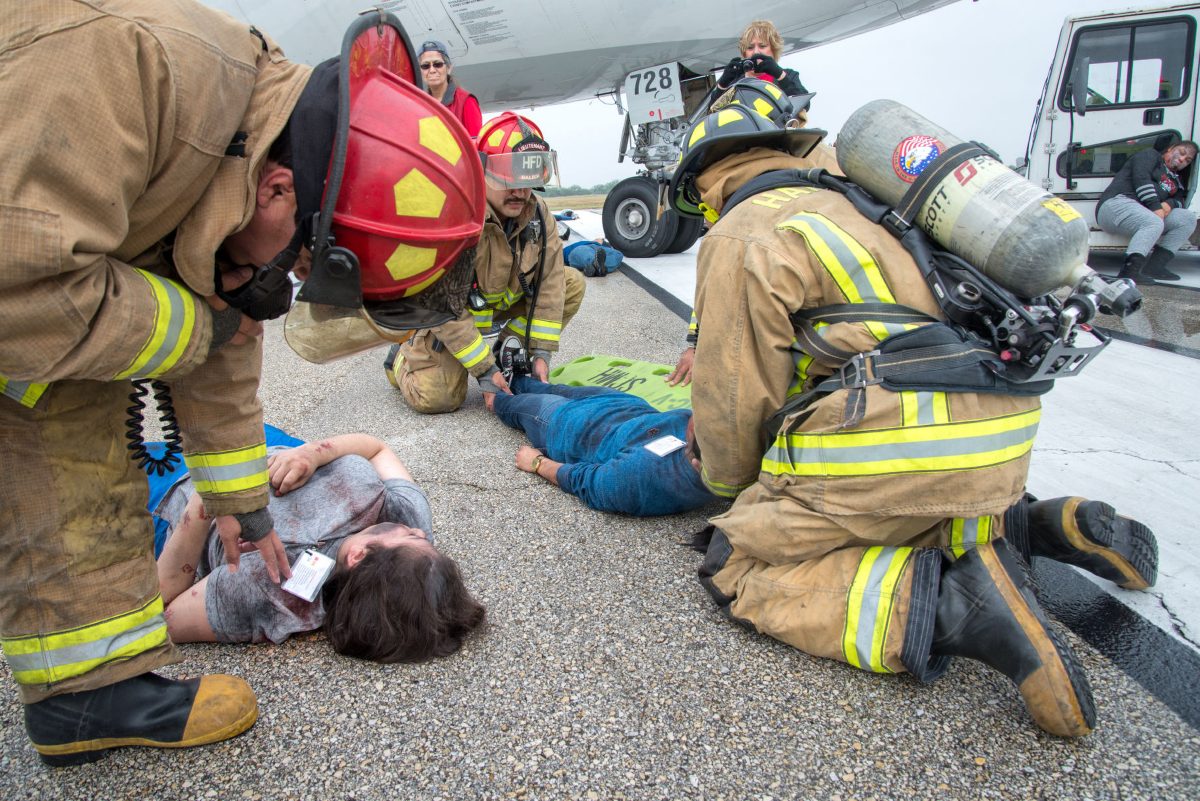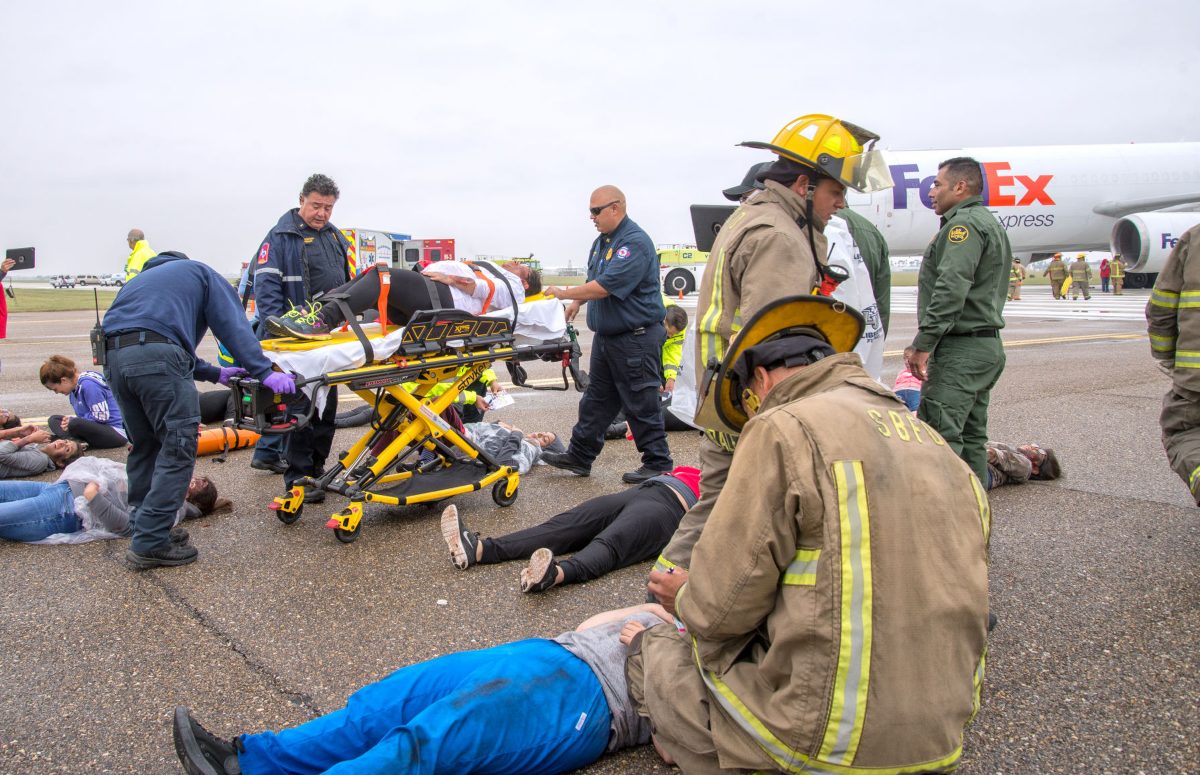HARLINGEN — It isn’t easy simulating disaster and a response, but every three years, Valley International Airport is mandated by federal law to do just that.
Yesterday was one of those days.
With a Fedex Airbus 300 generously donated as a prop, and towed to a remote part of the airport by a low-slung tug, the scene was set for fire, smoke and performances by 117 Texas State Technical College nursing and EMS student-actors in a mock crash.
“It gives victims and first responders a look at the actual size of the aircraft,” says Bryan Wren, assistant director of aviation for VIA, said of the Fedex jet. “It puts everything in perspective for them.”
As the TSTC students disembark from their buses into a gloomy, rainy and downright chilly morning, their disaster makeup and costuming look real — fake blood, ripped clothes and blackened faces greet the gray day.
“Here come the walking dead,” says Pete Moreno, an observer with the South Texas Emergency Care Foundation.
The actors/victims take their places on the damp tarmac beneath the wings of the Fedex jet and wait for the script to kick in.
“Oh, my God, it’s cold. That’s why I didn’t wear tights, girl,” one nursing student says to another as she tries unsuccessfully to find a spot out of the brisk wind.
The trigger to start the exercise is a small controlled fire which is lit by one of the firefighters at the scene. At that moment, emergency texts go out to airport rescue personnel, all participating fire and ambulance services, area hospitals and federal agencies.
The disaster is on.
Joseph Hilliard works for NJ Resources, a company which specializes in crisis and disaster management and training, which was hired by the airport. He introduces himself as “the wedding coordinator.”
As always, he says, different wrinkles are thrown into each simulated incident. Today’s involves a diplomat on the plane that crashed who is surrounded by armed security, and he can’t be removed from the plane by rescue personnel until a State Department representative is contacted due to the sensitivity of the case.
“We coordinate all the role-playing — and the safety,” he says.
Meanwhile, one of the “injured victims” races through the post-crash disaster area, screaming, “Where’s my baby!”
She’s another example of the chaos and curveballs which are on display today.
Within one minute, one of the airport’s two specialized fire trucks is on-scene, quickly dousing the fire from long distance with a precision water cannon. Within 10 minutes, firefighters and emergency vehicles from Harlingen, San Benito, La Feria, Brownsville and Weslaco begin to arrive to perform their parts in the action on the field, which is soon swarming with firefighters.
“Please help me, I can’t breathe,” comes a plea from one of the victims laying on the ground. Yet another feigns a late-term pregnancy, and her water breaks.
“It’s great for the EMS and nursing students because they get to see as a victim what it means from the start of an incident or an accident, all the way through triage, transport and what the hospitals do as well,” Wren said. “As they go into those professional fields they now have a sense of what a victim actually goes through for when they actually get to where they’re caring for them in their future when they graduate.”
Earl Velez of McAllen and Marisa Ruvalcaba of Los Fresnos are among the TSTC nursing student victims here today.
“You have to prepare for situations like this,” Ruvalcaba said. “It can happen in a moment.”
“We did pretty good, they’re actually, like, doing the injuries, the wounds that they have,” said Velez. “It looks so real.”
As the screams, moans and shouts for help continue, it is unnerving even when one knows it is mere stagecraft.
“Where’s my baby!” screams the woman, who has escaped from the triage area to return to the crash site and continue her panicked search. Once again, rescue crews remove her.
The TSTC students receive credit for participating in the disaster simulation and, at least on this day, they’ve earned it.
“It’s my first year, my first semester,” says Alyssa Reyes of San Benito, who is enrolled in TSTC’s licensed vocational nursing program. “It’s technically a school day, so yes, I would say I am getting credit for just helping out.”
The disaster simulation at the airport, ironically enough, had been postponed twice because of rain. But after an hour, the rain and mist cease sweeping the airport tarmac, although the day remains overcast.
As firefighters carry off the injured to staging areas, assessing injuries, burns and wounds, things begin to stabilize and the sense of urgency begins to ratchet back.
Following the chaos, the smoke and the uncertainty, we are thankful to hear “baby” has been located and is safe.
Baby was a lost dog.
Participating organizations:
Texas State Technical College
Valley International Airport ARFF
Harlingen Fire Department
Harlingen Police Department
San Benito Fire Department
La Feria Fire Department
Weslaco EMS
Brownsville EMS
South Texas Emergency Care Foundation
Southwest Airlines
United Airlines
Sun Country Airlines
Fedex
DHL
American Red Cross
American Red Cross South Texas
Harlingen Medical Center
Valley Baptist Medical Center
Trauma Regional Advisory Council
FBI
Transportation Security Agency
U.S. Border Patrol
U.S. Customs and Border Protection
Texas State Technical College
Valley International Airport ARFF
Harlingen Fire Department
Harlingen Police Department
San Benito Fire Department
La Feria Fire Department
Weslaco EMS
Brownsville EMS
South Texas Emergency Care Foundation
Southwest Airlines
United Airlines
Sun Country Airlines
Fedex
DHL
American Red Cross
American Red Cross South Texas
Harlingen Medical Center
Valley Baptist Medical Center
Trauma Regional Advisory Council
FBI
Transportation Security Agency
U.S. Border Patrol
U.S. Customs and Border Protection

